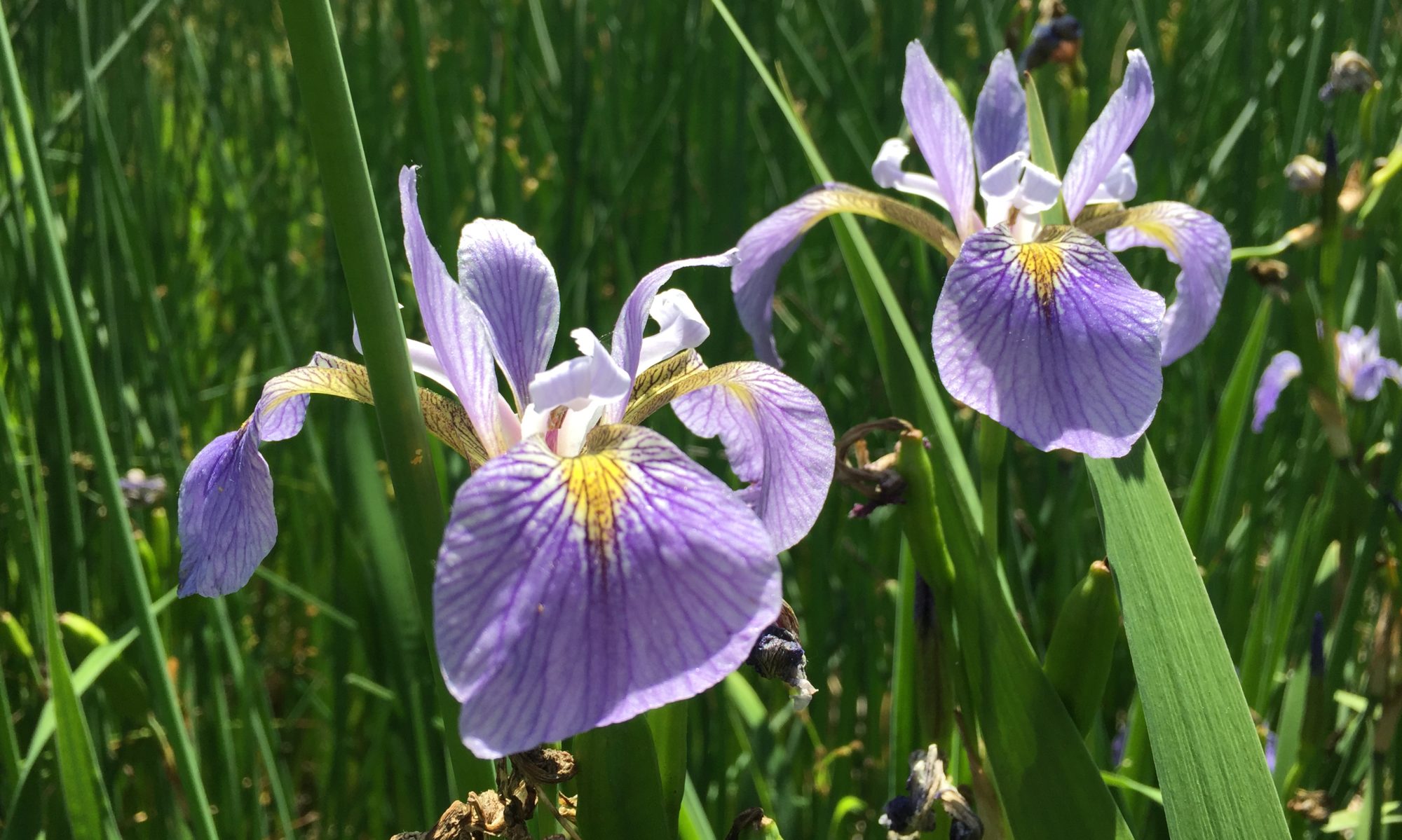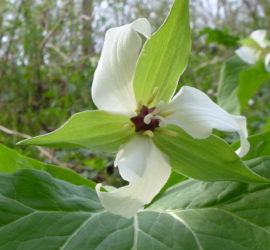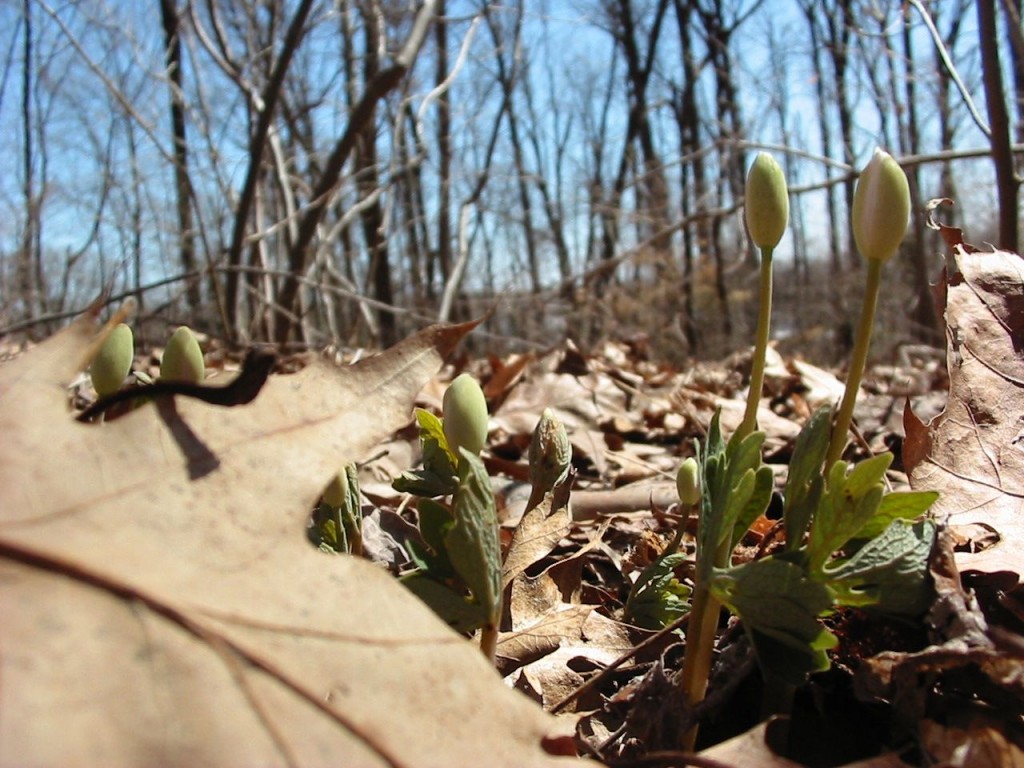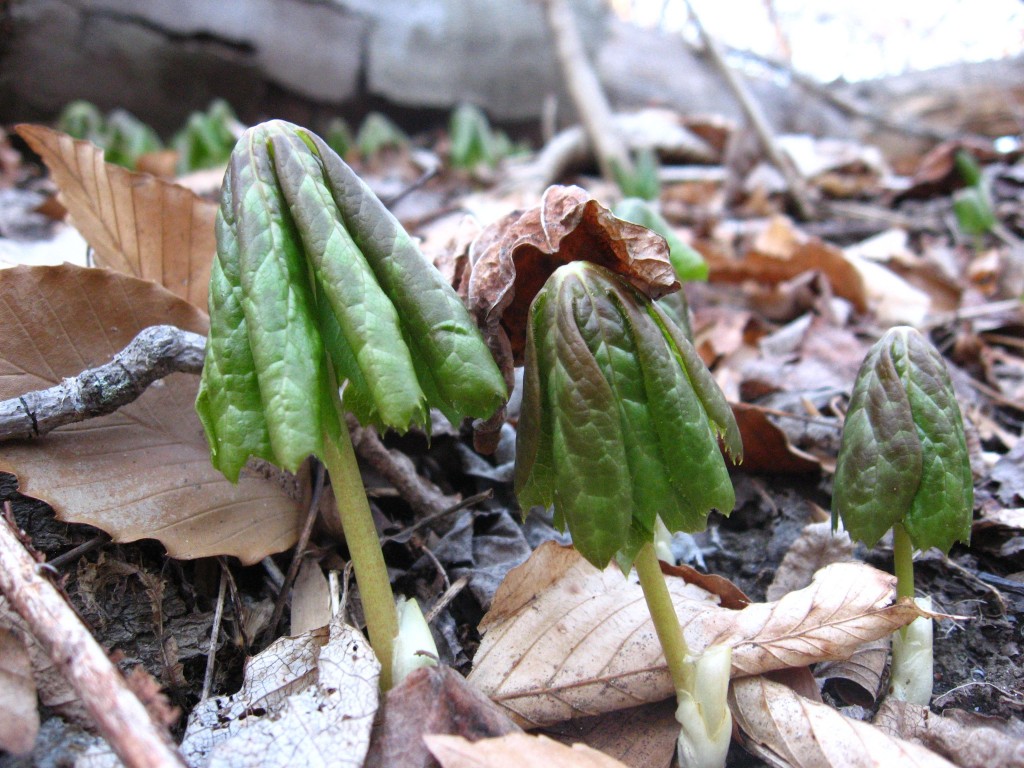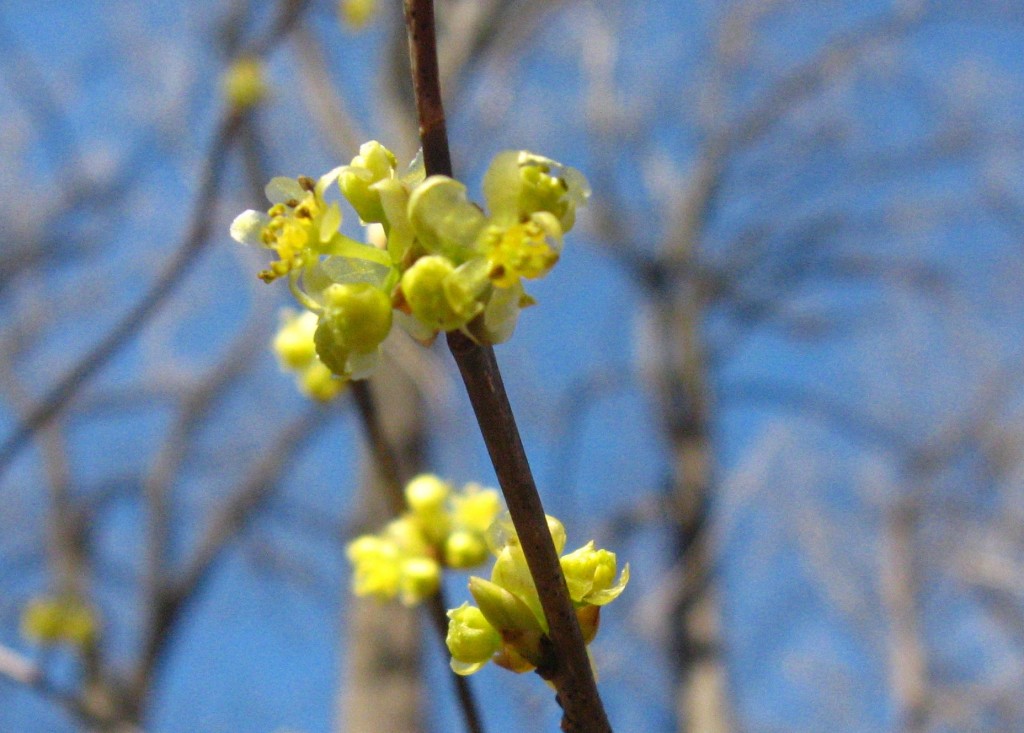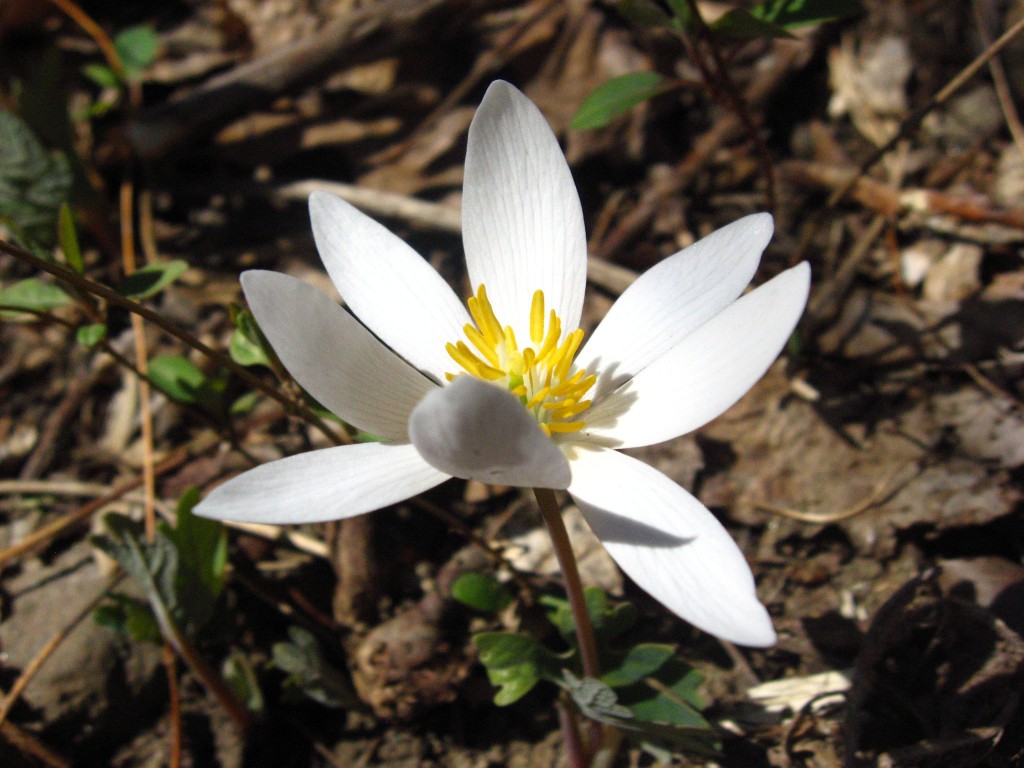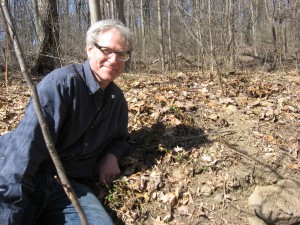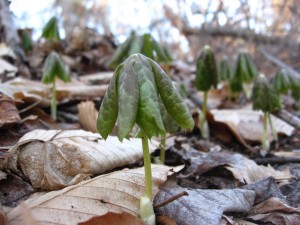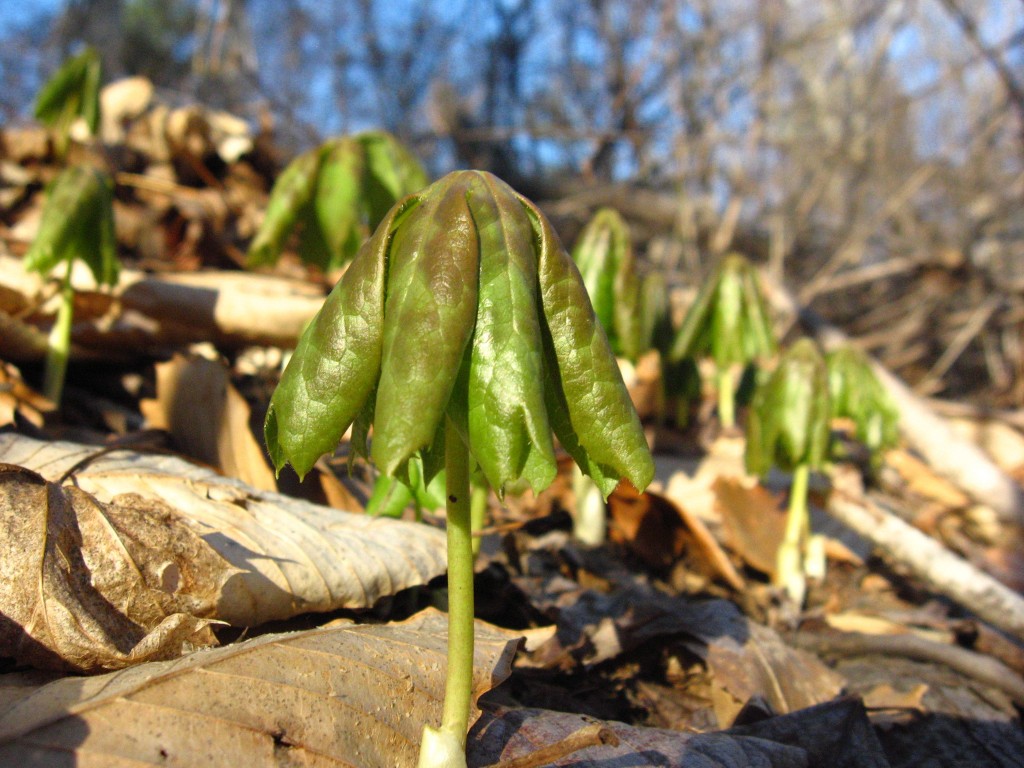
We returned the next day to the section of West Fairmount Park that was at least a week ahead of Morris Park in the Mayapple department. Â The sun was out and was casting a favorable glow on the Mayapples. (Podophyllum peltatum) Â We are enchanted by the youthful and jaunty Mayapples rising out of the leaf litter.

Claytonia virginica
We found Spring beauty blooming as well. Only three miles away and about 100 feet lower in elevation at the most, and these flowers are blooming. Not to be found even emerging in Morris Park, in the vicinity of Morris Park Road. This native wildflower is so interesting to watch develop.  Each specimen has a series of flowers waiting in line along the stem, and every day a new one gets its chance to bloom.  We love to find them along the path in Morris Park, or for that matter, wherever we may be.  The flowers have very distinct and ultra-thin pinkish stripes in their white blooms. Their stature is small, only about 4 inches.  Like Bloodroot and Rue anemone, they must be appreciated from the ground level.  Once down on the forest floor, you can see how they grow out of the dense leaf litter, their tiny stems finding the holes in the matte of dead leaves and sending out a pair of long and thin leaves, and then the flower stalk  finds its way out, reaches above the leaves and sends out the series of flowers.
Like Bloodroot and Rue anenome, these flowers will smile for the camera. The Sanguine Root likes to move slowly on wooded paths in the spring. Our cameras have bumped against the forest floor many times getting a picture of the happy life of a small spring flower blooming in its place in the world, in its own ecosystem, often amidst a miniature colony of flowers in the wild.
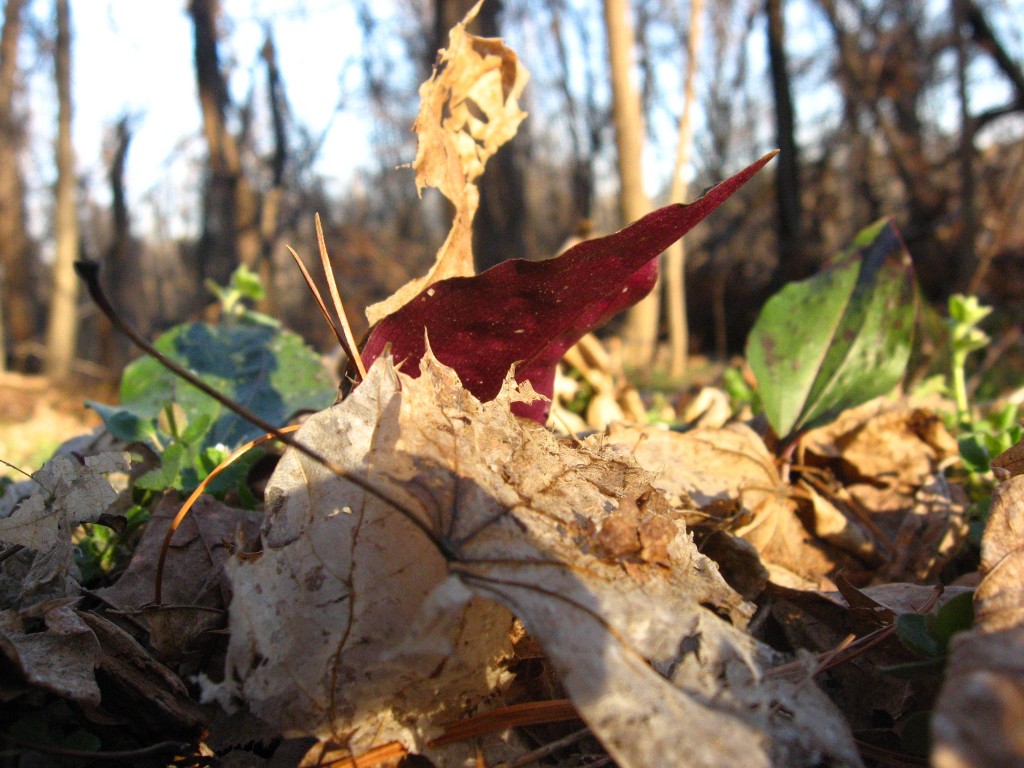
We returned to the site of the Cranefly orchid. The small colony of 5 or so specimens captured our imaginations. Especially interesting is the underside of the solitary winter leaf. Â The underside has a rich maroon color. Â The Maroon color is found only in the veins and some spots on the upper side of the leaf.
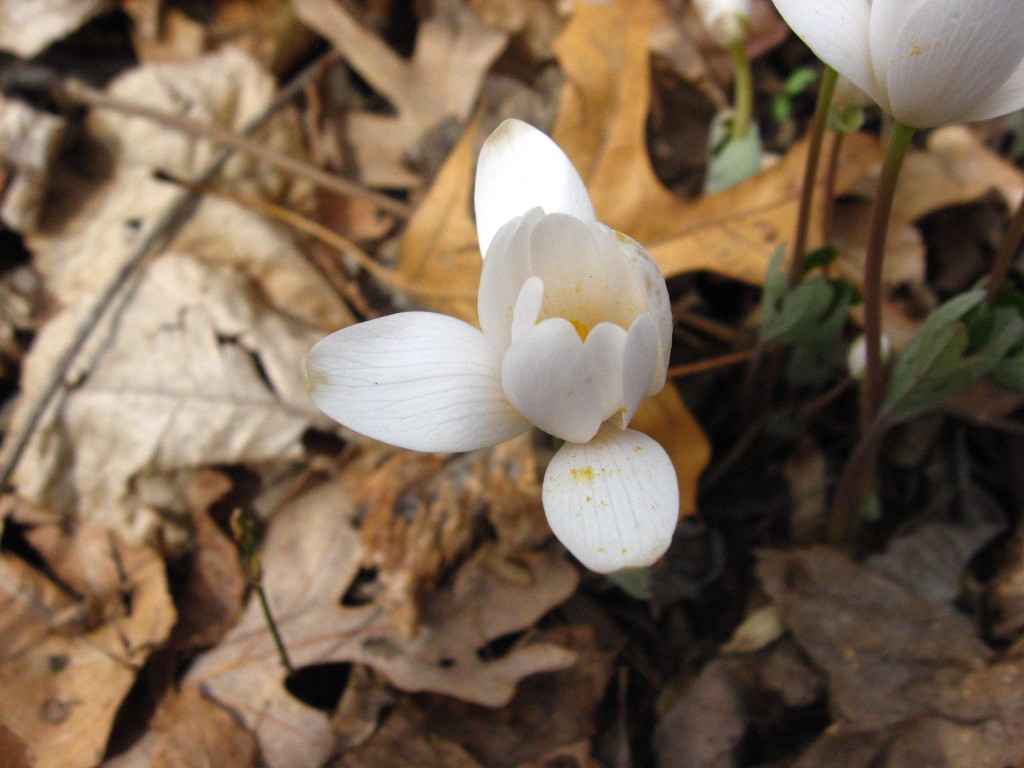
Blooming in the very late morning, the Bloodroot of Morris Park.

We have been learning to read a forest landscape by just looking at the fallen leaves. Even last years crop is still legible, old crumpled-up Tulip Poplar and Oak can be seen. Â These bloodroot flowers are just now opening up. We have noticed how the cold and rainy weather has not been conducive to full-on blooming. The flowers will remain in a hesitant state for days before they fully open.
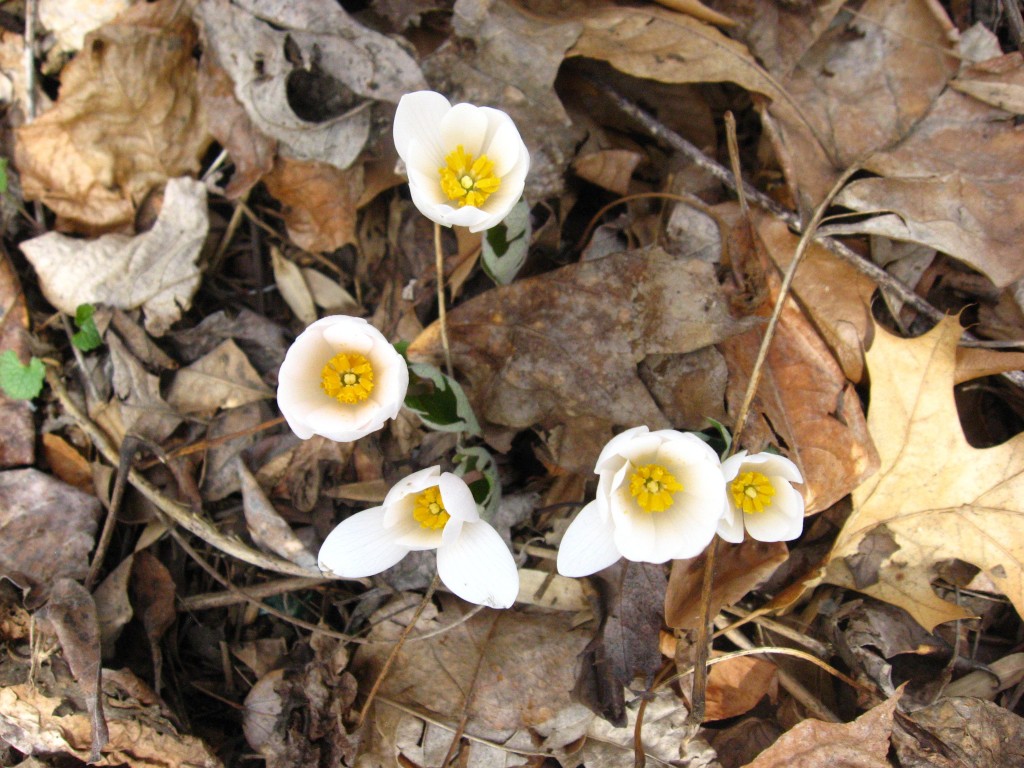
We were not able to watch, but these flowers most likely fully opened by two this afternoon. This shot was taken  around half past eleven.
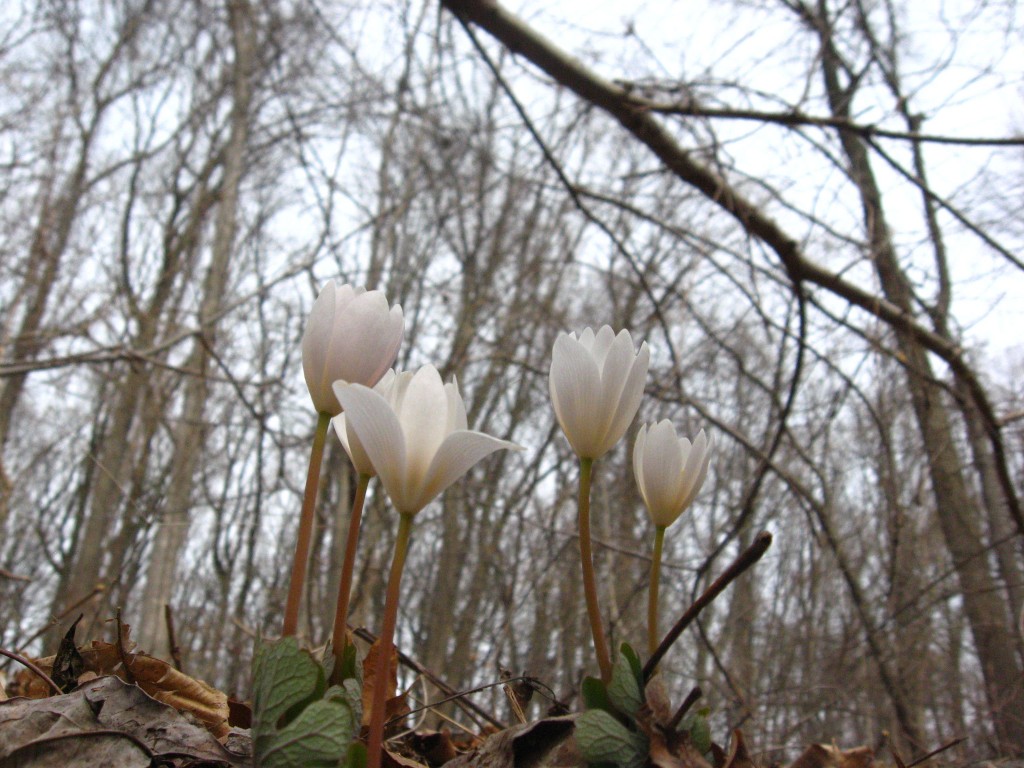
To have the opportunity to observe these flowers on a full-time basis would be necessary to fully understand their nature. However, we have been observing them closely since 2007, and have been able to see patterns of behavior in the past 4 years. Taking interest in this species has helped us understand other native perennials as well. Just a few weeks ago, The Sanguine Root was able to see Bloodroot in the state of Florida, that had already begun seed production.  This was eye-opening.  We drove over 1000 miles and there it was, Sanguinaria canadensis, growing in Florida. Then, we found it blooming in South Carolina a few days later.  Understanding a species will most likely take a lifetime, but  most likely more, because species must adapt to constantly changing conditions.

When the Sanguine Root Environmental Restoration Team found these two patches, they were just a few flowers barely reaching out of a matte of Japanese honeysuckle, Garlic mustard, and Multiflora rose. These three noxious invasive exotics had taken over this section of woods. Â Since their control has begun, The native Bloodroot has thrived and expanded its colonies. In the picture above can be seen two colonies of Bloodroot, growing successfully on the forest floor. This flower is contributing to the ecosystem by providing an early source of nectar to pollinating insects. Â The bee we found yesterday just waiting on the outside of the flower, possibly for hours, is illustrative of this need for nectar. Â We have seen bloodroot flowers on a warm spring day a-buzz with insects, with so much activity, that some of the petals get knocked off, and fall on to the forest floor, and the bees keep coming anyway.

While Bloodroot will pollinate itself, it is the cross-pollination between populations that makes for a healthy species. Â Genetic diversity is necessary for the longevity of a species. Â Each strain has its own story to tell, its own adverse series of events, and the plants that survived those events and were able to succeed and grow, and provide pollen, are contributors to the collective genetic pool of a species.
The pollen will make its way to a flower of another population, and will find its way into the ovary of the female part of that flower.  This flower will now create a seed that has genetic traits that are representative of the specimens within that population that were able to provide pollen during a period of adversity or just a period where a pollen-creating population survived and produced pollen.  The period of adversity could be just as much as that annoying late March snowstorm  or that hailstorm that broke so many of the bloodroot flowers . The flower that was closed up real tight during these events and the three days of cold and rain that followed, but was able to open up the following week for  two consecutive days of sunny weather in early April is the one that survives. This is the flower that the insects gravitate towards, and this is the specimen that gets pollen from another survivor a bit away, and  now the  flower has been exposed to pollen from another flower that has survived the latest early spring hailstorm/snowstorm/cold spell/rain event/heat wave/…This is how any species survives the long haul.
 ,Morris Park, Philadelphia
,Morris Park, Philadelphia
